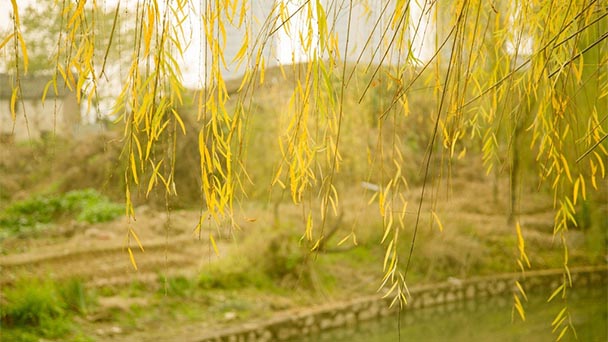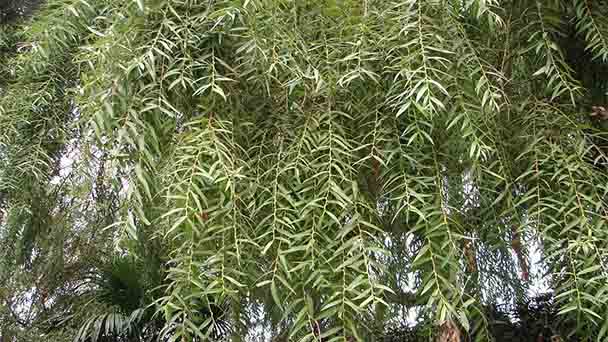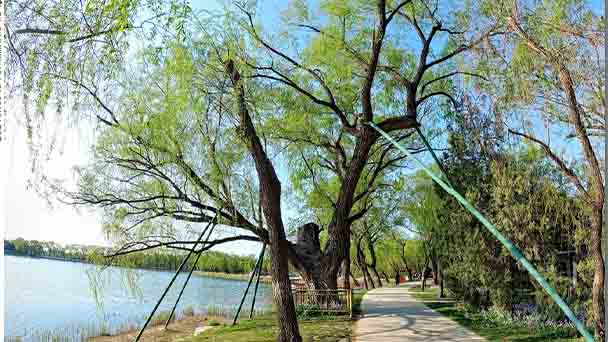Willow Profile
Written by Joy
Sep 27 2020

Willow is the general name for a class of plants. Willows are numerous and easy to hybridize. Hybrids have strong growth potential and adaptability and are easy to reproduce asexually. They can be selected from the natural or artificial hybrid population to obtain excellent clones through asexual reproduction. Besides, the method of plant tissue culture can also be used to quickly obtain a large number of high-quality saplings. The main breeding method is to improve its branches, leaves and tree shape, and improve its anti-pollution and anti-pruning ability.


Willow morphological characteristics
Trees or creeping, cushioned, erect shrubs. Branches cylindrical, pulp heart suborbicular. Without terminal bud, lateral bud usually clings to branch, bud scale is simple. Leaves are alternate, rarely opposite, usually narrow and long, mostly lanceolate, pinnately veined, serrate or entire; Petiole is short; Stipules, much serrate, often early falling, rarely persistent. The relationship of catwalk or oblique exhibition, the first leaves were open or meantime with the leaves. Bracts are entire, glabrous or glabrous, persistent, rarely descended early. The pistil consists of 2 carpels, the ovary is sessile or stalked, the style is variously long, simple or divided, and the stigma is divided or undivided. Capsule 2-valved. The seed is usually small.Willow growth habit and growing environment and distribution
Willow belongs to the wide ecological range plant, and the adaptability to the environment is very wide, light, wet, cold resistant, is the middle of wet tree species. However, some species are more resistant to drought and salinity, and can grow better in poor ecological conditions, and better in fertile plains with favorable site conditions. The general lifespan is 20~30 years, and a few species can reach more than 100 years.Alias water willow, silk willow, willow branches. The branches hang long and slender. Leaves narrowly lanceolate or linear-lanceolate. The varieties and types include bending weeping willows, branches curl and pendulous. Yellow weeping willow, branchlets are yellowish green or brown yellow, internodes shorter; Red weeping willow, crown long ovate, branchlets purplish are red or purple purple, leaves broad lanceolate.
Willow is suitable for a variety of different ecological environments, regardless of high mountains, plains, dunes, and polar have willow growth. It is mainly distributed in temperate regions of the northern hemisphere. Dry willows are found in the plains of North, Northeast and Northwest of China. Weeping willows are throughout China, Europe, Asia, America, and many countries have been introduced. Korean weeping willows, round head willows and long pillar willows are mostly produced in northeast China, Gansu and Shaanxi, as well as in Korea, Japan and the Far East of Russia.
Willow efficacy and role
Willow is often used to create a head wood forest, and the public USES the head wood method to repeatedly obtain fuelwood or woven materials, which is one of the earliest trees recognized and planted in large quantities by the ancient Chinese. In some parts of Gansu province, people trim the branches of willow trees, peel them, bury them in the soil, and fill them with water. After a few months, when the soil around the branches turns black, the branches are dug out and used in the shade. And the branches of the willow tree after this manner shall be for the rafters, neither to rise nor crack, nor to bear moths. Another way of cutting willows is found in some areas of Gansu province. Without cutting the crown, only cutting the branches, the trunk could still grow like a normal tree, and the tree trunk is deliberately tilted, adding a pile, which is very convenient for climbing.Willow cultivation
Commonly used cutting propagation, can maintain the good characteristics of the mother tree. Give priority to with cutting propagation, also can sow raise seedlingCuttings were carried out in early spring, and excellent plants with fast growth and fewer diseases and insects were selected as plucking mother trees. Before germination, cuttings were taken for 2~3 years and cut into 15~17 cm long as cuttings. Cuttings were cut 20×30 cm apart, directly inserted, fully watered after planting, and always keep the soil wet, timely wipe the buds and weeding, after hair root applied topdressing 3~4 times, the seedlings were vulnerable to weevils, aphids, willow beetle.
Latest Updated
- Benefits of Bugleweed - 7 Science-backed Health Benefits
- Bugleweed Dangers & Side Effects - Is It Poisonous?
- How to Plant Evergreen Trees - What You Should Know
- When to Plant Evergreens - Grow Guide for Evergreen Trees
- 12 Wonderful Evergreen Shrubs for Your Garden
- 12 Popular Evergreen Plants with Pictures for Beginners
- When And How To Prune A Lilac Bush Like a Pro
- How to Grow & Care for Lilac Vine (Hardenbergia Violacea)
- Japanese Lilac Tree (Syringa Reticulata) Care & Propagation Guide
- Shumard Oak Pros and Cons - What to Know
Popular Articles
- Winter maintenance of Antirrhinum Majus
- How to Grow Terminalia Mantaly Tree
- How to Grow and Care for Crossostephium Chinense
- How to grow Antirrhinum Majus in spring
- Peristeria Elata (Dove Orchid) Profile: Info & Care Guide
- Underwatered Snake Plant (Sansevieria Trifasciata) - Signs And How To Fix
- How to Care for Brazilian Jasmine Plant (Mandevilla Sanderi)
- How to Grow & Care for Graptopetalum Purple Delight in Summer
- Rosa Chinensis (China Rose): Plant Growing & Care Tips
- How to Care for Baby Sun Rose (Aptenia Cordifolia)